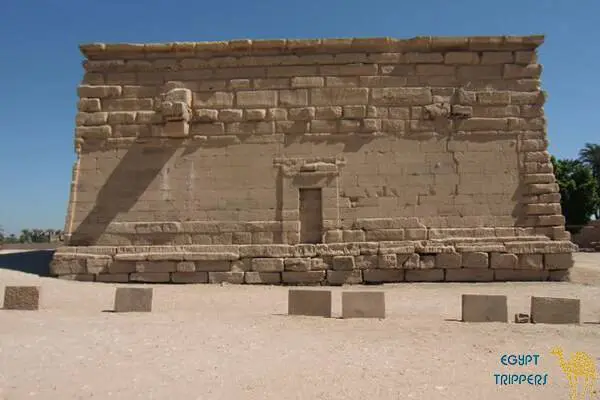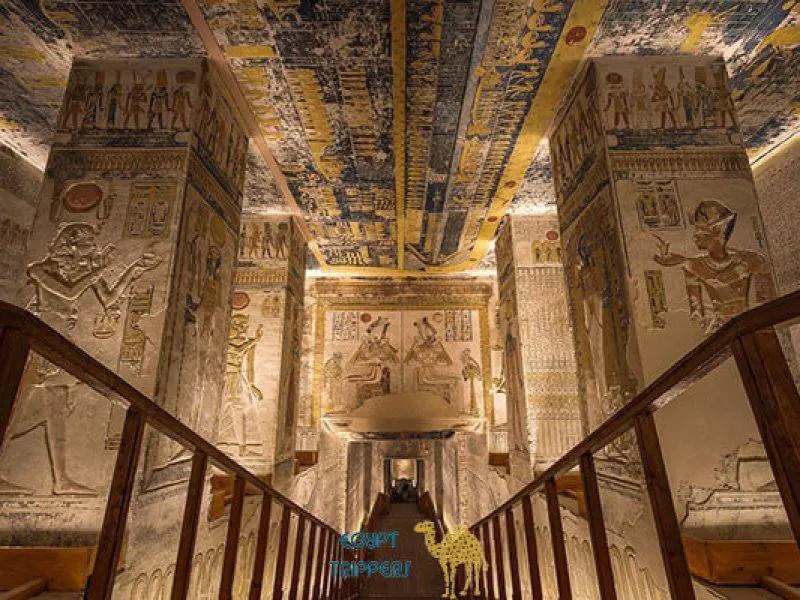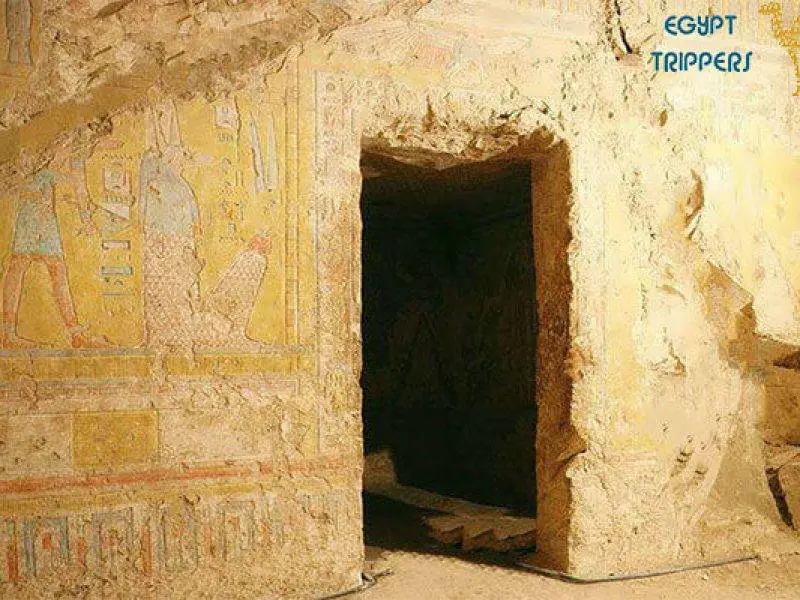Deir el-Shelwit Temple

This ancient Egyptian temple Deir el-Shelwit dedicated to Isis is actually from the Greco-Roman period and stands on the West Bank of the Nile at Luxor.
About Deir el-Shelwit Temple
The Fascinating Architecture
Though many emperors are believed to have made additions to the temple, all that remains today is its small main building, ruins of its brick wall enclosure, and a well. It’s thought to have been built in an area of 74 by 51 meters, but the main east-facing temple only occupies 13 by 16 meters. It has a central chamber or ‘naos’ which are decorated with intricate paintings and inscriptions depicting Roman emperors making offerings to Egyptian god’s The outer walls are plain but the inside is simply stunning. A corridor runs around the outside which has four chapels and a washroom. A staircase leads to the roof from here. Its southern outer wall appears to have been built from stones from other buildings from Medinet Habu.
Paintings, inscriptions & significance of Deir el-Shelwit
The original entrance was some 60 meters East of the temple depicting Roman emperors Galba, Otho, and Vespasian while offerings to various gods are depicted in beautifully painted scenes. According to inscriptions present, construction of the Isis temple started at the beginning of the 1st century CE and was finished during the Greek-Roman era. It is considered significant because of its dedication to Isis and not the Theban triad.
The temple was first examined in the mid-19th century but a proper study of the inscriptions was not published till 1992. The inside of the temple contains a bug of inscriptions similar to the inscription of the Temple of Philae and the Temple of Dandara Paswan while about 32 pottery pieces were discovered, being from both Roman and Greek times which is not surprising as even Julius Caesar was thought to have had a hand in the temple’s decoration.
Symbols of Remarkable Egyptian History
However, one of the major reasons to visit this temple is definitely the curious phenomenon regarding the sun’s rays which truly shows both the ingenuity of the Egyptians and their knowledge which was put into practice. On October 23 and February 20 of every year, the sun’s rays would go through a straight line to lead right to the faces of the gods Amun and Monto Ra.
From this, we can see how well the temple has been preserved and there are many images that give clues to the mechanics of worship at the shrine as well as a ‘corridor of mysteries’ which surrounds the naos and through which visitors would make offerings. There is also a place of purification though its function is unknown. All in all, the temple reveals a turning point in history whereby the previous religion of the Egyptians goes through a great deal of change as it comes into contact with other civilizations who also bring forth their own interpretations and aspects to it.
So, for anyone wishing to see where a page of history had turned, this temple would definitely be the place to go as it brings together so many diversities of religion and place.



Leave a Reply